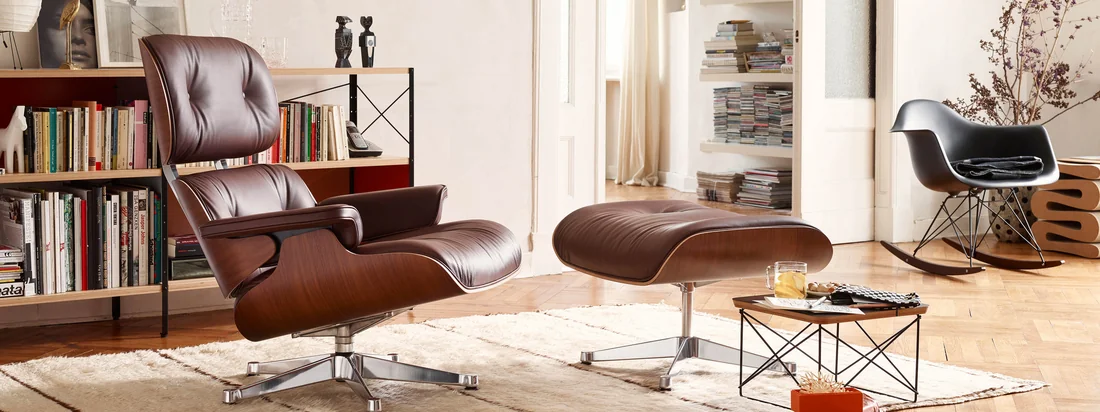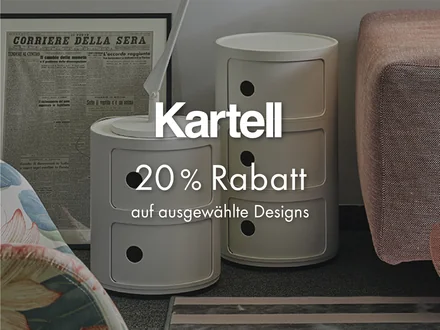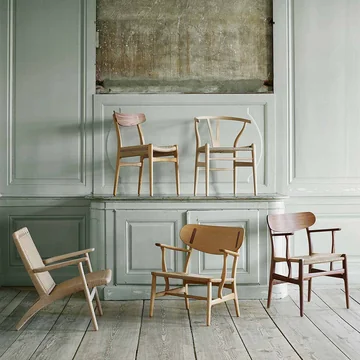How Does a Piece of Furniture Become a Design Classic?
Usually, products become classics because of their aesthetic qualities and high-quality workmanship, which allows them to be passed on from generation to generation without ever going out of fashion.
”A classic is a product made a long time ago but still considered contemporary." Rolf Fehlbaum, Vitra
The most famous example of classic design is the approach to art, design and architecture taught by the German art school Bauhaus, which produced highly influential and trend-setting designers from 1919 to 1933. One of the classic pieces produced during that time is the famous Wagenfeld lamp. Last but not least, the innovative design of another classic, the Lounge Chair by Charles and Ray Eames, set new standards in material processing as far back as 1956 and is still considered a highly contemporary design today. Design classics are investments, and that's not just because of their unique designs, but because they are durable, functional and timeless.
Modern Classics and New Editions
Today, many of the classic designs of the 20th century are being reinterpreted in innovative and highly creative ways. Young designers inspired by the iconic shapes of the old masters are now creating products based on those of influential designers like Verner Panton, Hans J. Wegner and Arne Jacobsen, and in doing so are setting new standards.
New editions of design classics in turn allow us to enjoy them with the added benefit of modern improvements. Mid-century designs are revitalized and adapted to modern needs and lifestyles with regard to both look and function, and to accommodate changes in peoples' physique over recent decades, which includes an average height increase of 10 cm over the past 70 years. Chairs made by the design duo Eames, for example, are consequently going to be offered in a classic and a slightly higher edition in the future.
The new touches also include an expansion of colour and material ranges, whereby the original design is adapted only in collaboration with the designers themselves or the relevant foundation. Such changes are always based on a respectful preservation of the original and aim to ensure high quality standards.
The iconic designs of the 20th century are complemented by more contemporary originals that are already considered classics today. These products blend both function and aesthetic in highly exceptional and successful ways, which has meant that replicas of these originals are already widely available. However, although these replicas might mimic the original product, they are generally easily identifiable by their lesser quality and flair.
Why Invest in Design Classics?
In times of uncertainty, we tend to look for stability. Design classics are furniture with history and give us a sense of tradition, safety and continuity – the qualities we trust.
At the same time, many design classics are also representative of historic or social change. They are not just consumer goods, but cultural goods! The Wassily chair by Marcel Breuer, for example, is considered as marking the beginning of the modern furniture movement. This armchair is the first of its kind, as its structural elements are not concealed inside upholstery, but are plainly visible and celebrated at the same time. The chair's steel tube frame is representative of contemporary minimalist design and innovation. Design classics are products and furniture that are examples of timeless, durable and forward-looking design.

 Alessi
Alessi
 Artemide
Artemide
 Danese Milano
Danese Milano
 Driade
Driade
 Georg Jensen
Georg Jensen
 Kartell
Kartell
 Magis
Magis
 Stelton
Stelton
 Tecnolumen
Tecnolumen
 Carl Hansen & Søn
Carl Hansen & Søn
 Fritz Hansen
Fritz Hansen
 Knoll International
Knoll International
 Thonet
Thonet
 Vitra
Vitra
 Achille Castiglioni
Achille Castiglioni
 Aino Aalto
Aino Aalto
 Aldo Rossi
Aldo Rossi
 Arne Jacobsen
Arne Jacobsen
 Bruno Munari
Bruno Munari
 Enzo Mari
Enzo Mari
 Ettore Sottsass
Ettore Sottsass
 Joe Colombo
Joe Colombo
 Philippe Starck
Philippe Starck
 Richard Sapper
Richard Sapper
 Rolf Heide
Rolf Heide
 Sigvard Bernadotte
Sigvard Bernadotte
 Stefano Giovannoni
Stefano Giovannoni
 Timo Sarpaneva
Timo Sarpaneva
 Tom Dixon
Tom Dixon
 Wilhelm Wagenfeld
Wilhelm Wagenfeld
 Alvar Aalto
Alvar Aalto
 Charles & Ray Eames
Charles & Ray Eames
 Eero Saarinen
Eero Saarinen
 Eileen Gray
Eileen Gray
 Hans J. Wegner
Hans J. Wegner
 Marcel Breuer
Marcel Breuer
 Verner Panton
Verner Panton